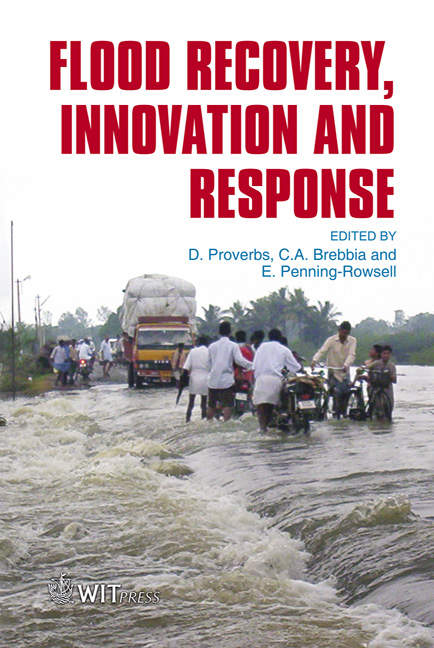The Industrialisation Of UK Flood Damage Repairs
Price
Free (open access)
Transaction
Volume
118
Pages
10
Page Range
197 - 206
Published
2008
Size
431 kb
Paper DOI
10.2495/FRIAR080201
Copyright
WIT Press
Author(s)
T. Boobier
Abstract
The flooding of large areas of the UK in 2007 caused damage to circa 48,000 homes and 7,000 businesses, and will give rise to a total expenditure of circa £3bn. Much of the burden will fall on UK insurers. This paper reviews the changes that have taken place within the UK flood repair industry over the past 5 years and draws clear links between the ideas provided by Egan in his report ‘Rethinking Construction’ and how these have now successfully found their way into the flood arena. It considers the movement away from a piecemeal approach to repair into what has become a highly ‘industrialised’ process, including the role of supply chain management and procurement in the development of these processes. The non-financial impact of damage on the homeowner is now commonly described as the ‘emotional rollercoaster’. Processes have been, and will be specifically modified as far as practically possible not only to reduce the adverse impact of the damage on the homeowners’ emotional wellbeing, but also to mitigate cost. The effects of ‘process-driving’ the current flood repair solution are also considered, taking into account the impact of the 2012 Olympics. Comparisons are drawn with international situations where there are problems of widespread damage involving many properties. Keywords: flood repair processes, supply chain, emotional rollercoaster. 1 Introduction The presence of flooding in UK and Northern Europe is not an unknown phenomenon, with memories of the 1953 East Coast flooding still firmly established in recent memory. However, the UK flooding of 2007 is now seen as
Keywords
flood repair processes, supply chain, emotional rollercoaster.





